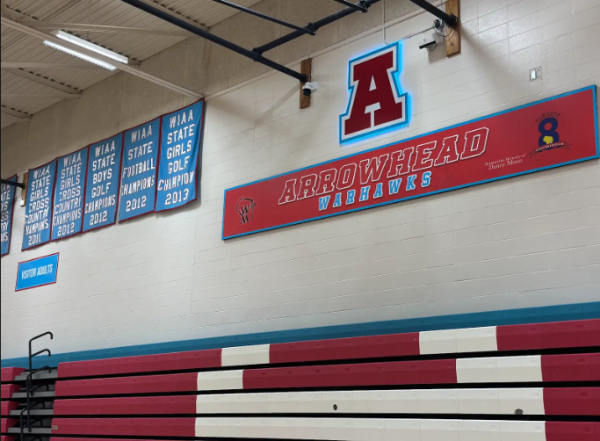Students’ Thoughts on Attendance
With flu season in full swing, some students are attempting to balance feeling ill with keeping up with their grades. With technology like Canvas and the knowledge gained from virtual learning, keeping up with studies may no longer be an issue. However, students are now voicing their distaste for the policy of school days allowed missed.
The Arrowhead Handbook’s current policy, 632, reads “Good student attendance and punctuality reflect a high degree of self-discipline. Cooperation is encouraged on the part of the students and their parents. Attendance is one of the key factors in maintaining and improving achievement levels in all subjects and maintaining quality student-teacher contact. Every absence tends to decrease the efficiency of this total school process. … Arrowhead High School encourages all concerned groups in the District to share the responsibility of promoting good attendance.”
“I had one girl come in and she was upset because the ‘government made her come back to school,’” said health room aide Paula Nordwig.
With only an allotted 10 days to miss school, according to Nordwig, many students are facing the threat of truancy by the time the holidays roll around. The Wisconsin Legislature states the penalty for truancy is either a fine of up to 5000 dollars or up to 30 days in jail. This is added up by class periods missed; if all ten periods were missed, a full day will be written as an absence. If only a few periods were missed, those periods get added to the total. From there, absences are broken down into three categories: unexcused, excused, and exempt.
Senior Daniel Payne said, “I didn’t know there were three different kinds.”
Unexcused absences are absences where the student does not get called in, either by a guardian or themselves if they are eighteen or older, or when they are absent and are over the allotted 10 days. Excused absences are absences that have been called in and given a reason. An illness without a doctor’s note would be considered an excused absence. Both of these still count towards the 10 allotted days. The only thing that does not is an exemption. You can obtain an exemption if you have a doctor’s note, a religious holiday, and a family emergency.
If a student is out sick, the only way to have that absence turned into an exempt absence is to provide the school with a doctor’s note. This involves students getting checked up on by a doctor and having the doctor write off the student who was in fact in their office. If it is not a visit due to illness but an appointment, It is suggested by Nordwig to let the office know beforehand.
Many students report feeling ill but see no reason to spend money on a doctor’s visit. This can be the case for students with less disposable income; a doctor’s visit every time they have a cold may seem unreasonable. To this, Nordwig points out how important it is to get a note, as it helps allow for later missed days. Nordwig suggests coming back with a doctor’s note at a later date when it is more convenient if that is an issue.
“The unwritten rule,” says Nordwig, “is to see a doctor if it (being sick) is over three days.”








